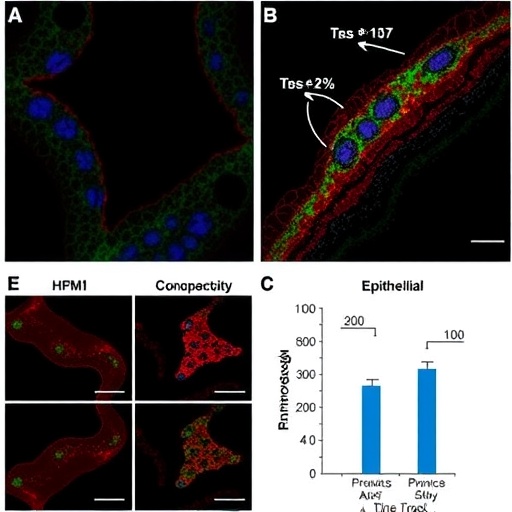Wednesday, April 17, 2019, CLEVELAND: Previous research has suggested that specific factors about the doctor performing colonoscopy – for example, a gastroenterologist versus a surgeon, female versus male – were associated with different rates of detection of precancerous polyps.
However, a Cleveland Clinic-led research team found that those previously described differences among endoscopists are not true.
Adjusting for a myriad of both patient- and doctor-related factors not previously accounted for, Cleveland Clinic researchers concluded that the previously cited differences disappeared in adenoma detection based on the endoscopist features – except when it comes to the detection of sessile serrated polyps, which are difficult to detect and a known precursor of colorectal cancer.
The study data – published in JAMA Surgery – showed that lower sessile serrated polyp detection was only associated with endoscopists who had a lower annual volume of colonoscopies and longer years since completion of medical training.
A colonoscopy is a common endoscopic procedure, with more than 14 million examinations performed in the U.S. annually. The efficacy of a colonoscopy to prevent colorectal cancer depends on the quality of the endoscopist to detect and remove lesions that can turn into cancer, such as adenomas and sessile serrated polyps.
“There are national benchmarks that define a high-quality endoscopist. Asking your endoscopist about their personal colonoscopy quality metrics can empower patients to make informed choices about their colonoscopy provider,” said Carol Burke, M.D., vice chair of the Department of Gastroenterology, Hepatology & Nutrition at Cleveland Clinic and senior author of the study.
Cleveland Clinic’s research team conducted a large, single-center retrospective study that
analyzed data from 16,089 average-risk, screening colonoscopies performed by 56 providers (gastroenterologists, 60.7 percent; surgeons, 26.5 percent; advanced endoscopists, 12.5 percent) between January 2015 and June 2017. Twenty-five percent of endoscopists were female and 25 percent were international medical graduates. The providers’ median time from training was 16.3 years and they performed a median of 267 colonoscopies per year.
Provider characteristics considered in the study included endoscopist specialty, gender, location of medical school, years since fellowship, number of colonoscopies performed per year, practice setting and presence of trainee during colonoscopy. The analysis also accounted for numerous patient characteristics not considered in some studies, including age, gender, smoking status, comorbidities such as diabetes and coronary artery disease, medication use, and colonoscopy-related factors, including timing of procedure (month and time of day), location where colonoscopy was performed, cecal intubation rate, number of polyps found, quality of bowel preparation and withdrawal time.
Using natural language processing, the researchers were able to extract and read large amounts of textual data from the electronic medical records of the 16,089 patients that would otherwise have been difficult to access. Only endoscopists performing more than 100 colonoscopies per year were included.
In the study, the average adenoma detection rate was 31.3 percent, which was above the minimum national standards suggested by the ASGE-ACG quality task force guidelines. The results of this analysis showed that no endoscopist characteristics – including medical specialty and gender – are associated with adenoma detection rate.
Regarding the proximal sessile serrated polyp detection rate, the overall rate of 4.6 percent was similar to other recent studies. The only endoscopist factors associated with a lower proximal sessile serrated polyp detection rate included endoscopists who perform lower volumes of colonoscopies and who are further from their medical training.
“Sessile serrated polyps were characterized in 2005. They are often in the proximal colon, very subtle with their flat appearance, and thus difficult to detect. These features are probably why proximal sessile serrated polyps are a major cause of interval colon cancer – cancer that occurs between two colonoscopies. Our findings reinforce the need for endoscopists to stay abreast of current resources to improve their detection and resection of sessile serrated polyps,” Dr. Burke said.
###
About Cleveland Clinic
Cleveland Clinic is a nonprofit multispecialty academic medical center that integrates clinical and hospital care with research and education. Located in Cleveland, Ohio, it was founded in 1921 by four renowned physicians with a vision of providing outstanding patient care based upon the principles of cooperation, compassion and innovation. Cleveland Clinic has pioneered many medical breakthroughs, including coronary artery bypass surgery and the first face transplant in the United States. U.S. News & World Report consistently names Cleveland Clinic as one of the nation’s best hospitals in its annual “America’s Best Hospitals” survey. Among Cleveland Clinic’s 66,000 employees are more than 4,200 salaried physicians and researchers and 16,600 nurses, representing 140 medical specialties and subspecialties. Cleveland Clinic’s health system includes a 165-acre main campus near downtown Cleveland, 11 regional hospitals in northeast Ohio, more than 180 northern Ohio outpatient locations – including 18 full-service family health centers and three health and wellness centers – and locations in southeast Florida; Las Vegas, Nev.; Toronto, Canada; Abu Dhabi, UAE; and London, England. In 2018, there were 7.9 million total outpatient visits, 238,000 hospital admissions and observations, and 220,000 surgical cases throughout Cleveland Clinic’s health system. Patients came for treatment from every state and 185 countries. Visit us at clevelandclinic.org. Follow us at twitter.com/CCforMedia and twitter.com/ClevelandClinic. News and resources available at newsroom.clevelandclinic.org.
Editor’s Note: Cleveland Clinic News Service is available to provide broadcast-quality interviews and B-roll upon request.
Media Contact
Caroline Auger
[email protected]
http://dx.




